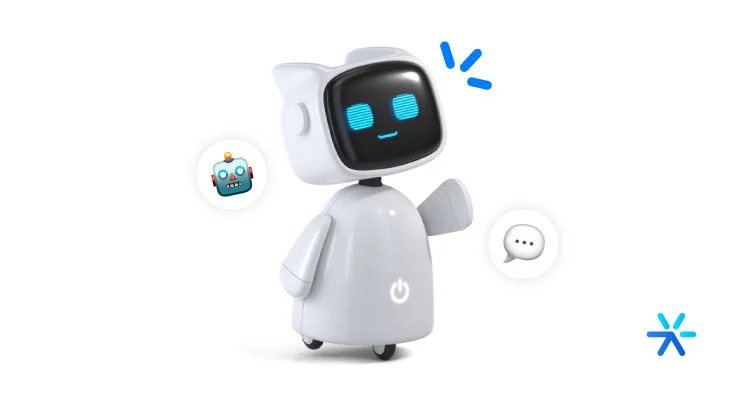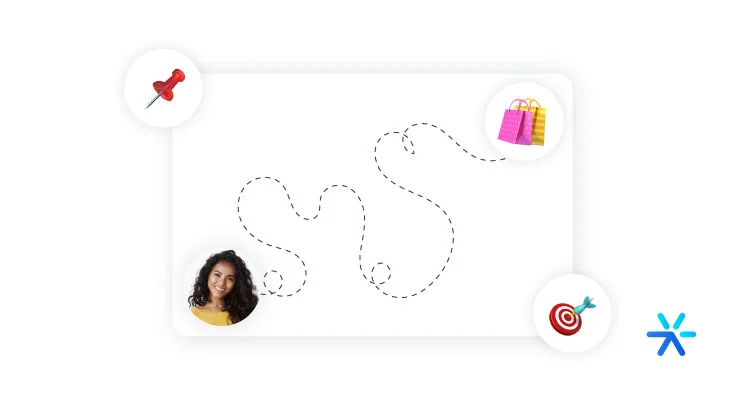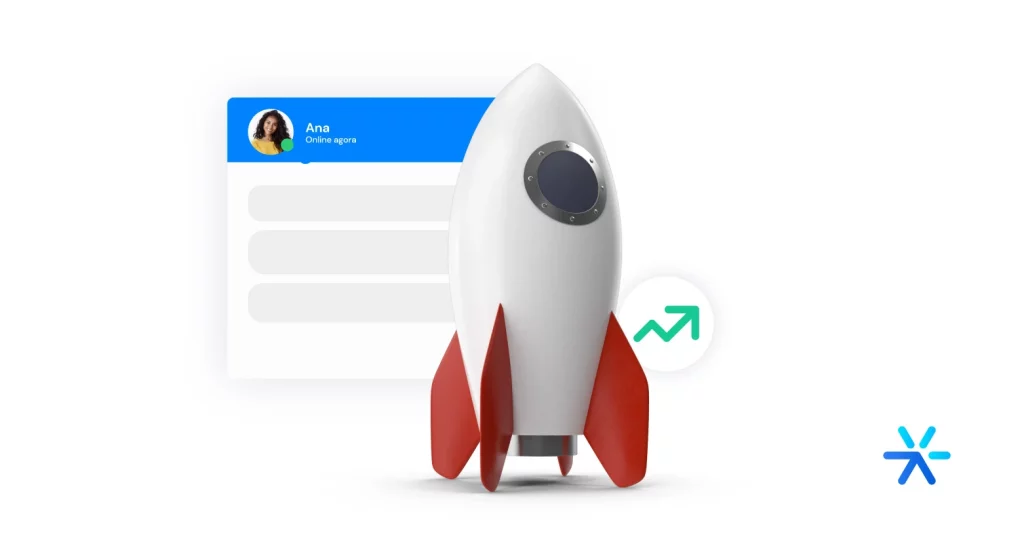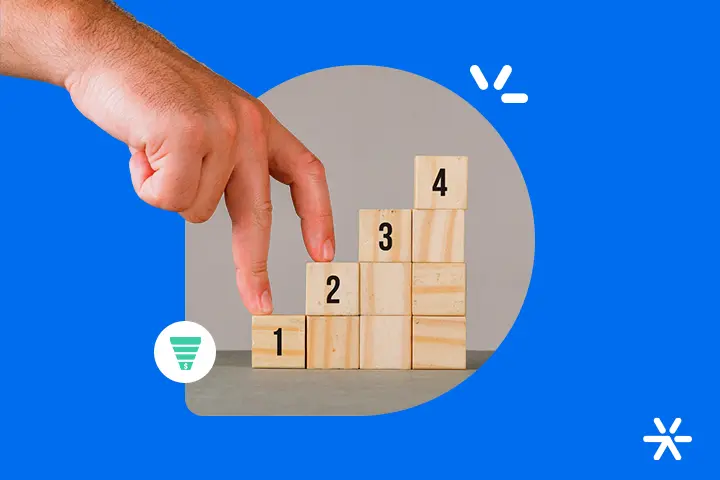Chatbot for E-commerce? Where to Use and Product List
Is it worth it using a chatbot for e-commerce?
This is a question that, if you follow our blog, is certainly already answered in the articles you have read: yes, it’s always worth working with chatbots.
But what’s interesting is that e-commerce sites are the types of websites that use chatbots the least in their operation.
It’s extremely rare to enter a sales website and find chatbots that help you find the best products and guide you throughout your experience.
But why does this happen? Many reasons. It turns out that many online entrepreneurs always focus on sales and end up neglecting other points that complement the sale.
And these points are very well explored by chatbots. Whether it’s generating leads, directing interest to specific pages, or providing customer service and support, chatbots immensely help e-commerce businesses.
In this article, we’ll specifically discuss this. All set? Then let’s dive in:
What is a Chatbot for E-commerce?

A chatbot is a simple software installed on your website that can automatically respond to inquiries from your visitors.
Or, as is the case with Leadster, proactively offer materials to visitors seeking to convert them into leads.
Your site receives hundreds or thousands of visits per day from people who enter it for various reasons.
This is even more true in e-commerce, which attracts people at all stages of the Buying Journey.
There are people who visit your site to check your prices because they’re interested in buying.
Others visit your site just to browse products because they’re still researching.
And then there are those who have already purchased from you and visit your site to track their order, check delivery status, clarify doubts, etc.
The chatbot, being a platform mainly focused on communication, is available for all these cases.
And the best part is that they are absolutely scalable. If you install a chatbot to generate leads, one person can handle your entire operation, regardless of the size of your site.
And even if your site grows and receives more visits, the same chatbot continues to handle the demand without major issues.
This applies to chatbots of all purposes and types. And they come in a variety of forms.
Here’s an example of a chatbot installed on our site:

It’s the icon in the bottom right corner. And when you click on it, this message pops up:

This is Leadster’s lead generation chatbot, and this is the message it displays only in this blog category.
The message for the homepage is different. And the message for other blog categories is also different. In some cases, we customize the message for each specific page.
But to better discuss how chatbots work, we need to understand their types better, and which type is most used by e-commerce businesses.
Join me:
What are the types of chatbots?

You noticed in the previous topic that we’re already starting to discuss the types of chatbots, right?
That’s because we can’t talk about what a chatbot really is without also mentioning its different types.
And of course: we also need to discuss the most common types of chatbots for e-commerce and where exactly they operate.
The type of chatbot you choose for your site will define your conversational marketing strategy for e-commerce.
This is because the type of chatbot is not something you choose without good planning.
A lead generation chatbot does not handle customer service. And a customer service chatbot does not generate leads.
Knowing the types of chatbots is the first step to understand where to implement them in your digital sales process.
Let’s analyze the three main types now. Follow me:
Lead Generation Chatbot
The lead generation chatbot’s main function is to convert visitors into leads on your site.
That’s the best chatbot for e-commerce.
Just to recap: leads are all the people who have shared their contact information with your brand and have allowed you to send advertising communications or content through these channels.
These leads are generated in various ways, but usually — and at the Top of the Funnel — they come from Lead Magnets: free materials you make available on your site — downloaded by your site visitors.
The lead generation through this methodology is called Inbound Marketing, which works alongside Content Marketing.
But here’s the thing: without a chatbot, you’re practically “hiding” your materials on a page on your site.
Or you need to run campaigns to promote these materials on your other media, such as Facebook, Instagram, and even Google Ads and Social Ads.
The lead generation chatbot automates this generation and qualification of leads for all visitors to your site.
By configuring your flows, you determine how to approach visitors on each page of your site, what material to send, or even request Bottom of the Funnel information and then send qualified leads directly to the sales team.
This is an advanced type of chatbot, focused on e-commerce businesses that apply Inbound Marketing in their strategy.
E-commerce businesses looking for a chatbot to provide support and conduct screening for customer service will need another type:
Customer Service Chatbot (live chat)
This type of chatbot is geared towards customer service on your site and can be used in both e-commerce and any other type of business that has a reasonable volume of support requests.
The customer service chatbot simulates a human attendant and aims to resolve simple requests from your users.
These requests can include issuing duplicate invoices, order status, complaints, questions, etc.
Or even quotes, in the case of service companies or e-commerce businesses dealing with very expensive products that do not disclose their prices — in these cases, however, a lead generation chatbot is a better idea.
The model is called live chat because the service is provided instantly by the chatbot, which tries to resolve what can be resolved at that moment.
If it fails, the query is typically forwarded to a human agent.
This is the most common type of chatbots for e-commerce, but it’s also possible to use both — the lead generation and the customer service chatbot — in different situations on your site.
For example: you can have a lead generation chatbot offering offers and discounts to those who register on your site — registration is a way to convert into a lead, by the way.
And at the same time, for customer service inquiries from your existing customers, use the live chat.
Below is a list of the most common live chats in the market — all with free plans for testing. Check it out:
Chatbot for Social Media
Chatbots for social media are simpler but serve a very important functionality for e-commerce businesses.
You know when you post a photo of a new product and dozens of people ask about the price?
Well, you have two alternatives — manually respond to everything or hire a chatbot for social media.
These chatbots also respond to inquiries in direct messages, but it’s worth mentioning that they are quite simple.
You won’t be able to build more elaborate flows, nor will you be able to resolve simpler requests directly, as is the case with live chat.
In fact, you’ll probably only be able to send one or two responses to comments and direct messages.
They mainly serve to guide people asking questions. “How much does it cost?” the person asks, and “Access the link for more information:” the chatbot responds.
Where can chatbots be used in e-commerce?

Well, we’ve talked a lot about the types of chatbots and even started to touch on their uses within an e-commerce website.
But we need to discuss the subject in a more advanced way because it really is a bit extensive.
Understanding the use cases of chatbots on websites is important for you to understand what needs to be done for everything to go well.
Without this understanding, you end up only taking advantage of a small part of the potential that chatbots bring to your site.
Here, I’ll talk about all types, okay? There are opportunities in e-commerce for any chatbot you install, and that’s what we’ll see now.
Follow me:
Collecting user information
This point is very important for e-commerce businesses since they need to generate leads and it’s not easy to capture new registrations.
Interestingly, many e-commerce businesses don’t take lead generation so seriously.
The logic of Inbound Marketing, being very suitable for the service sector, ends up being seen as a strategy only for that functionality.
And that’s not quite right. The chatbot for e-commerce offers you the possibility to offer targeted offers to the new visitor as soon as they open the site.
It’s the famous “10% discount on the first purchase” or “Free Shipping on any purchase if you register now.”
Offering these opportunities through a chatbot increases the number of registrations you have on the site since you can determine that these offers appear on all pages the visitor visits.
And the more registrations, the more information for lead qualification you’ll have, allowing you to put your email marketing and Inbound Marketing strategy into action.
Offer support to existing customers
Another fundamental point of chatbots in e-commerce is to offer automated support to your customers.
This is crucial. E-commerce businesses have a very high volume of questions and inquiries since online sales — although much more simplified today — go through various stages.
And all these stages are subject to questions and further clarifications.
A chatbot works precisely in this area: with it, you can automate the response to simpler questions and conduct initial screenings to assist your customer service team.
This team is naturally very busy. There’s a lot to do every day, and many of these tasks end up being answering simple and basic questions.
A chatbot for e-commerce automates a large part of the initial process, ensuring that your agents focus on more in-depth support, improving the experience for all your customers.
Upsell and Cross-sell
Upsell is when you sell a product to someone who has already made a purchase with you, usually almost instantaneously — the purchase is made, and an automatic message already reaches your customer.
Cross-sell is when you offer an additional product while the purchase is being made, increasing the transaction’s ticket.
Both methodologies can benefit from using a chatbot, which tracks the purchase and automatically offers new products.
Recover abandoned cart
Here we have a case similar to the previous item, Upsell and Cross-sell.
These three methodologies have always relied on email to work. But email, despite being great for any marketing strategy, still isn’t as instantaneous as a chatbot.
It takes time for the person to stop, open the email, and read what you sent. And time is precious for recovering an abandoned cart, for example, or executing actions that increase the average ticket.
With a chatbot, you can display personalized messages directly on the site or integrate with the WhatsApp or Telegram API and send a message there, a few minutes — even seconds — after the trigger occurs.
In the case of chatbots on the site, you can install it on your checkout page and offer deals at the moment of payment, for example.
We have two articles that exclusively discuss chatbots for WhatsApp and Telegram. They’re right below, check them out:
Keep customers engaged
Chatbots also serve to keep your customers and visitors engaged on your site, ensuring that they read all your content and access interesting pages for them.
Customers who are having trouble navigating the site, for example, are much more likely to abandon it and go look for products on a competitor’s site than spend even a few minutes browsing around.
The fierce competition of e-commerce — even more so with marketplaces dominating the entire market — makes customers very selective with their time.
Why continue on this difficult-to-navigate site if Amazon is right there, just a click away?
With chatbots, you can keep your customers engaged at all stages of the Funnel, ensuring a positive outcome directly in sales.
Collect reviews
Every e-commerce business needs reviews. Without them, the site loses one of the most important points for marketing and sales: social proof.
Go to any major marketplace today and you’ll see: all products will have reviews. And many people read the reviews first and then the product description.
A chatbot helps you collect these reviews. It displays the message instantly, even at the time of purchase, and can be configured to request product reviews and delivery feedback in all your communications.
This increases your volume of reviews, and better: you start to count on a certain amount of them every month.
For example: by adding messages asking for reviews to customers in all interactions with the e-commerce chatbot, you noticed that 5% of them actually leave a product review.
So, if you have 300 interactions with the chatbot monthly, you know it’s very likely that you’ll also have 15 reviews coming to your site.
Of course, this is not an exact science, but it’s much better to count on a probability than on your customer’s goodwill.
Best practices for using chatbots in your e-commerce

Well, now that you know everything about chatbots for e-commerce — their types, applications, and how they help you — we need to talk about some more practical aspects.
Here, we’ll discuss points such as where to install the chatbot, which integrations to perform, etc.
The maxim from the previous topic still holds: in some cases, we’re talking about customer service chatbots. In others, lead generation chatbots.
But this distinction will become very clear throughout the items, okay?
The important thing is to realize how chatbots facilitate your routine and open up opportunities you sometimes didn’t even know you had.
Let’s go:
Where to install it?
A chatbot can be installed in various areas of your site. But prefer areas that your visitors see the most and of course: your product pages.
A quick list of interesting locations to install a chatbot for e-commerce:
- On category pages;
- On product pages;
- On your FAQ;
- On checkout pages;
- On order status pages;
- On your site’s homepage;
Anywhere you can identify an engagement opportunity with your visitors and where questions might arise!
Integrate with your CRM
Chatbots for e-commerce must be integrated with your CRM.
In fact, any chatbot needs to be integrated with your CRM so you have more control over the information your leads share with you.
For example: if you have very complex sales, all information shared by a visitor in the e-commerce chatbot can be attached to the sales CRM.
This way, if a salesperson is going to approach this lead, they already have more in-depth information about them and can conduct the sales process in a much simpler and more effective way.
Flows should always be simple and intuitive
Never create flows that are too long, that talk more than they deliver what your customer needs.
There’s a whole discipline to create flows for chatbots. They need to follow the basic tenets of copywriting and more than that: understand what the person contacting you really needs.
Use your chatbot throughout the customer journey
Understanding what the Customer Journey is on your e-commerce site is essential to increase your sales.
And chatbots are your partners in this! With them, you can approach customers with personalized messages according to the phase they are in the Journey, increasing your chances of making a sale.
The mere installation of the chatbot on specific pages of your e-commerce site is already an effort in this direction.
Test Leadster for free now!
Everything we’ve talked about so far you can put into practice today.
Seriously, for real: with that list of chatbots for e-commerce earlier in the text, you can test the best ones on the market for free. The process takes a maximum of 5 minutes.
And if you want to test a lead generation chatbot — I highly recommend it as well — you can do this work with Leadster today too!
All you have to do is click on this link and start your 14-day trial. No credit card required!







